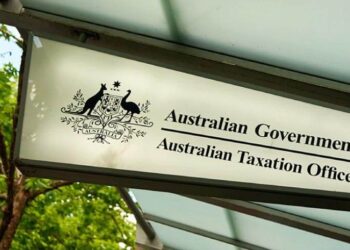In a recent blog post, Townsends Business and Corporate Lawyers’ Elizabeth Wang said while using an SMSF structure to complete a property purchase was a viable strategy if the client was struggling to secure finance through traditional means, the client needed to ensure they were complying with basic SMSF obligations at the same time.
Ms Wang used the example of Bob and Barbara, who had purchased an off-the-plan apartment that had dropped in value since signing their contract of sale, and wanted to complete the purchase using an LRBA through an SMSF as they could no longer secure enough finance through their bank to afford the purchase price.
“Before Bob and Barbara’s SMSF starts making investments, it must have an investment strategy,” she said.
“Bob and Barbara will need to ensure that the acquisition of the property through their SMSF is in line with the investment strategy of their SMSF and that it reflects the purpose and circumstances of their SMSF. The strategy needs to be reviewed regularly.”
Ms Wang added that Bob and Barbara would also need to set aside funds in addition to their LRBA to set up the self-managed fund.
“In order for Bob and Barbara to establish their SMSF, assets must be set aside for the benefit of members,” she said.
“A nominal contribution amount — for example, $10 — must be allocated to at least one member of the fund. Bob and Barbara, as directors of the corporate trustee, will also need to open a bank account in their SMSF’s name once the trust deed has been signed.”
Ms Wang said the newly established SMSF could also be in danger of breaching the sole purpose test, given it was being used to fund a personal property purchase for the couple, meaning the fund would need to carefully justify its reasons for such an investment.
“The [sole purpose] test requires that a fund only be used for members’ retirement. Getting a member out of a financial hole is not part of that purpose,” she said.
“So, the investment strategy is again crucial in documenting the likely retirement benefits for the members that would flow and the goal of maximising the efficacy of their retirement planning.”
Given the property in this example had already been purchased, Bob and Barbara would also need to rescind their previous contract of sale and execute a new one with the SMSF trustee as the purchaser of the property, Ms Wang said.
“The new contract should be signed after the trust deed has been signed, the fund’s bank account has been opened and the rescission documents have been prepared,” she said.
“As Bob and Barbara have already paid the deposit, they will also need to seek a refund from the vendor for the deposit, and the SMSF will then be required to pay the deposit from its bank account.
“This is because in order to apply for concessional stamp duty on the bare trust deed, the SMSF must be able to provide and satisfy the local duties office that the SMSF or its lender provided all the money to acquire the property, including the deposit and the balance of the property paid at settlement.”



So what you’re suggesting is that the SMSF would then purchase the property under an LRBA structure at the initial purchase price from which the members have rescinded from. That would suggest that although the SMSF is purchasing at arms length from the vendor, they are purchasing at an inflated value to the current market. Is that in the best interest of the SMSF?
The and/or nominee is generally inserted in contracts of sale in Victoria, it is less common in other jurisdictions like NSW. Sometimes you may have to ask for it to be included, which most people don’t do before signing the contract. You also need to check the stamp duty implications of relying on such a clause.
As for the deposit, while treating the members’ payment of the deposit as a contribution may be possible, you run the risk of the Duties Office assessor taking the view that this does not constitute payment by the Fund, which may jeopardise the application for concessional duty on the holding trust deed. If the application is rejected, duty at ad valorem rates will apply on the holding trust deed based on the value of the property (i.e. the SMSF will essentially be paying double duty). Taking this approach s is particularly risky in situations where the SMSF was not even in existence when the deposit was paid. Proceeding as the article suggests isn’t the simplest way, but it sure is the safest.
The article ignores the “and/or nominee” clause often inserted in contract of sale. Also, deposit paid by the couple can be treated as members’ contribution.